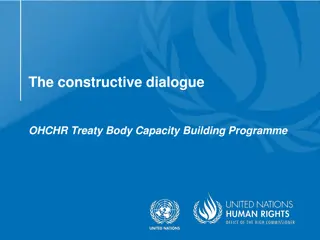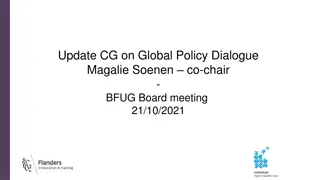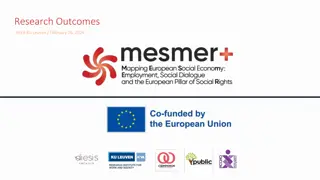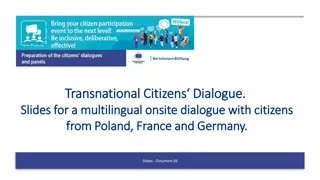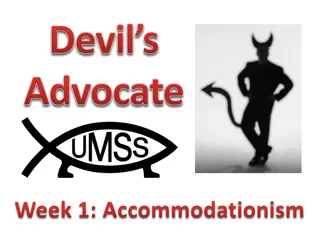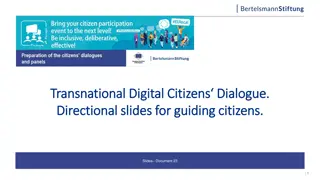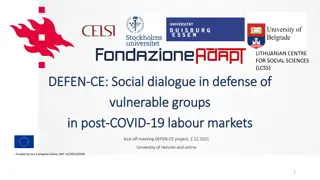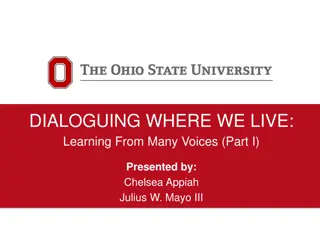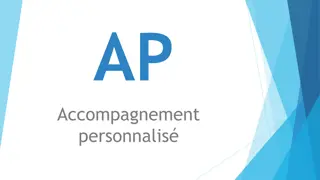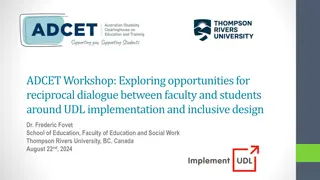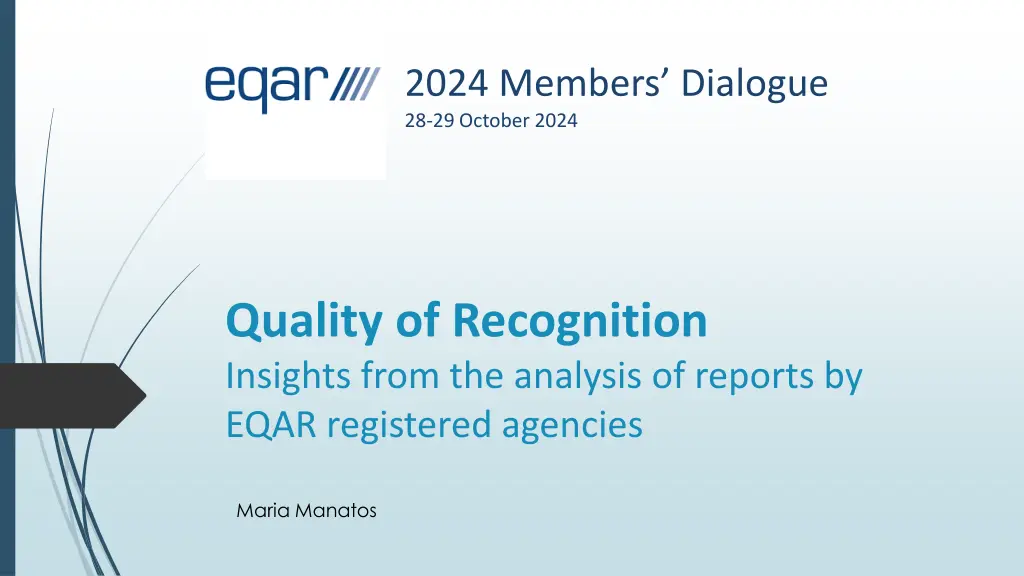
Insights on Quality of Recognition in Higher Education
Explore insights from the analysis of reports by EQAR registered agencies on the quality of recognition in higher education, focusing on the implementation of the Bologna Process and the principles of the Lisbon Recognition Convention. The project aims to support national procedures and better link recognition with quality assurance considerations. Delve into research questions, methodological approaches, results, and recommendations to enhance recognition practices.
Download Presentation

Please find below an Image/Link to download the presentation.
The content on the website is provided AS IS for your information and personal use only. It may not be sold, licensed, or shared on other websites without obtaining consent from the author. If you encounter any issues during the download, it is possible that the publisher has removed the file from their server.
You are allowed to download the files provided on this website for personal or commercial use, subject to the condition that they are used lawfully. All files are the property of their respective owners.
The content on the website is provided AS IS for your information and personal use only. It may not be sold, licensed, or shared on other websites without obtaining consent from the author.
E N D
Presentation Transcript
2024 Members Dialogue 28-29 October 2024 Quality of Recognition Insights from the analysis of reports by EQAR registered agencies Maria Manatos
Content 2 Background Research questions Methodological approach Results Considerations/recommendations
Background 3 Developed within the TPG-LRC Constructing Recognition in the EHEA (TPG-LRC CoRE) project Project implementation of the Bologna Process focusing commitment 2 legislation and compliant with Recognition Convention (LRC) in the countries of TPG B aims to support the on on its national procedures the key Lisbon Key recommendations better implement LRC, as well as how to better link recognition and quality assurance (QA) considerations and to on how
Background 4 Principles of LRC Quality Assurance ESG Recognition ESG 1.4
Background ESG 1.4 Student admission, progression, recognition and certification Standard: Institutions should consistently apply pre-defined and published regulations covering all phases of the student lifecycle , e.g. student admission, progression, recognition and certification. Guidelines: Providing conditions and support that are necessary for students to make progress in their academic career is in the best interest of the individual students, programmes, institutions and systems. It is vital to have fit-for-purpose admission, recognition and completion procedures, particularly when students are mobile within and across higher education systems. It is important that access policies, admission processes and criteria are implemented consistently and in a transparent manner. Induction to the institution and the programme is provided. Institutions need to put in place both processes and tools to collect, monitor and act on information on student progression. Fair recognition of higher education qualifications, periods of study and prior learning, including the recognition of non-formal and informal learning, are essential components for ensuring the students progress in their studies, while promoting mobility. Appropriate recognition procedures rely on - institutional practice for recognition being in line with the principles of the Lisbon Recognition Convention; - cooperation with other institutions, quality assurance agencies and the national ENIC/NARIC centre with a view to ensuring coherent recognition across the country. Graduation represents the culmination of the students period of study. Students need to receive documentation explaining the qualification gained, including achieved learning outcomes and the context, level, content and status of the studies that were pursued and successfully completed. 5
Research Questions 6 1. How both the standard and the more detailed guidelines of ESG 1.4 regarding recognition are evaluated by EQAR registered agencies? 1.1. Are the elements of the ESG 1.4 (on student admission, progression, recognition and certification) explicitly covered in review reports of EQAR registered agencies? It includes all phases of the student life cycle in order to identify the relative weight given to recognition in external QA.
Research Questions 7 1.2 How frequent is the topic of recognition in the external evaluation of the HEIs? What are the observations of EQAR registered QA agencies regarding the quality of recognition procedures of HEIs in the EHEA? Whether institutions have: (a) fair procedures (b) implemented in a consistent and transparent manner (c) in line with the principles of the LRC (d) made in cooperation with other institutions, QA agencies and the national ENIC-NARIC centres with a view to ensuring coherent recognition across the country. Takes into consideration the periods of study and prior learning, including the recognition of nonformal and informal learning.
Methodological approach 8 Database for External Quality Assurance Results (DEQAR) Institutional reviews uploaded by EQAR registered agencies EQAR registered QA agencies websites and their documentation (methodologies used by EQAR registered agencies) Coherence and consistency in the sample
Methodological approach 9 Inclusion criteria Reports written in English language Exclusion criteria Follow-up reports Reports published after 2015 (i.e. the year of the publication of the revised ESG) Reports of HEIs based in the EHEA Institutional responses and appeals Reports assessing study programmes, despite being classified as institutional assessment reports Reports resulting from institutional reviews only Reports assessing faculties or departments. 1 report per institution Older reports (in case of several reports of 1 institution) Current QA methodologies
Research sample 10 337 reports | 11 EHEA countries
Results Are the elements of ESG 1.4 (admission, progression, recognition and certification) explicitly covered in review reports? 12
Results Are the elements of ESG 1.4 (admission, progression, recognition and certification) explicitly covered in review reports? 13 The 4 elements are present in the majority of the reports, though at very different frequency. Focus more on the phases of admission and recognition, followed by certification (including diploma and the diploma supplement) and in the end, progression. Focusing on the recognition aspects, in most of the reports, the concept appears twice on average.
Results What are the observations regarding the quality of recognition procedures of HEIs? 14 The evaluations of HEIs cover similar aspects. Absence of specific references to LRC but principles are present. Consistency, transparency , fairness flexibility and of recognition procedures Link between quality of recognition and efforts to attract more international students The procedures of HEIs cover not only the recognition of qualifications gained through academic programmes, but also skills and competencies gained through other means/ methods of learning: turn job competencies into academic ones the implementation of recognition of non-formal and informal learning Recommendations focus on policies for targeting recognition of prior learning gained through academic mobility and non-formal and informal pathways.
Results: further improvement 15 The efficacy of the recognition process Transparency of procedures related to prior studies and credit transfer Familiarity with the procedures by the applicants Cooperation between HEIs, QA agenies and the ENIC-NARICs Regular joint activities and institutional agreements Fitness for purpose of the recognition processes - evaluate how adequate the recognition processes of the HEIs are and whether they achieve the set aims and objectives
Considerations/ Recommendations 16 Academic recognition in the EHEA is generally conducted with a high degree of compliance with the main principles of the LRC. Better awareness and use of special procedures for applicants Closer link between recognition and QA Stronger cooperation between ENIC-NARIC centers, QA Agencies, HEIs Better evaluation the fit for purpose of recognition procedures
QUESTIONS? THANK YOU!


